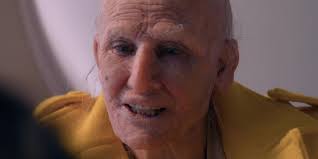🎬 The Substance (2024)

The Substance (2024) Movie Review: A Bold, Grotesque Dive into Beauty, Aging, and Identity
In a cinematic landscape saturated with predictable horror tropes and recycled narratives, The Substance (2024), directed by Coralie Fargeat, emerges as a visceral, unapologetic standout. This body horror masterpiece, starring Demi Moore and Margaret Qualley, doesn’t just push boundaries—it obliterates them, delivering a satirical gut-punch to societal obsessions with youth, beauty, and perfection. Released on September 20, 2024, in the United States by Mubi, The Substance has already cemented its status as one of the year’s most talked-about films, earning critical acclaim and a Golden Tomato Award for Best Horror Movie of 2024 from Rotten Tomatoes. But what makes this film so unforgettable? Let’s explore its gripping story, stellar performances, and the unsettling questions it leaves lingering long after the credits roll.
Plot Overview: A Tale of Two Selves
The Substance centers on Elisabeth Sparkle (Demi Moore), a once-celebrated Hollywood actress whose star has faded with age. On her 50th birthday, she’s unceremoniously fired from her long-running aerobics TV show by her sleazy producer, Harvey (Dennis Quaid), who declares that audiences crave someone younger and more vibrant. Devastated and desperate to reclaim her relevance, Elisabeth turns to a mysterious black-market drug called “The Substance.” This neon-yellow elixir promises to create a younger, “better” version of herself—enter Sue (Margaret Qualley), a flawless, energetic doppelgänger who bursts forth from Elisabeth’s spine in one of the film’s most jaw-dropping sequences.
The catch? The two must share time: one week for Elisabeth, one week for Sue, in a delicate balance maintained by daily injections and strict rules. At first, this arrangement seems like a dream—Sue reclaims Elisabeth’s lost spotlight, dazzling audiences with her youthful vigor. But as Sue’s ambition grows, she begins bending the rules, siphoning more time and vitality from Elisabeth, who deteriorates into a grotesque shell of her former self. What follows is a descent into chaos, rivalry, and a blood-soaked finale that’s as absurd as it is profound. This isn’t just a horror movie—it’s a scathing commentary on self-worth, wrapped in a fever dream of practical effects and neon-drenched visuals.
Demi Moore’s Career-Defining Performance
Demi Moore delivers what many are calling the performance of a lifetime as Elisabeth Sparkle. At 62, Moore brings raw vulnerability and fearless physicality to a role that demands both emotional depth and a willingness to embrace the grotesque. From the opening scenes, we see Elisabeth’s quiet despair as she gazes at her reflection, a woman caught between who she was and who society expects her to be. Moore’s transformation—both subtle and extreme—anchors the film, making her descent into madness and deformity all the more heartbreaking.
One standout moment comes early on, as Elisabeth prepares for a date, obsessively adjusting her makeup and outfit, only to smear lipstick across her face in a fit of self-loathing. It’s a scene that captures the film’s essence: the crushing weight of beauty standards and the toll they take on the psyche. Moore’s commitment to the role earned her a Golden Globe for Best Female Actor in a Motion Picture – Musical or Comedy, along with nominations for Best Actress at the 2025 Academy Awards. It’s a testament to her ability to transcend the Hollywood archetype she once embodied, proving she’s more than just a ’90s icon—she’s a force of nature.
Margaret Qualley as Sue: The Perfect Monster
Opposite Moore, Margaret Qualley shines as Sue, the idealized alter ego who becomes both Elisabeth’s salvation and her tormentor. Qualley, known for her work in Once Upon a Time in Hollywood and Maid, brings a chilling charisma to Sue, blending innocence with predatory ambition. Her dance background shines in the aerobic sequences, where she gyrates in a shimmery pink leotard, exuding a confidence that’s as captivating as it is unsettling.
Yet Sue isn’t just a pretty face—she’s a manifestation of Elisabeth’s deepest desires and insecurities, a mirror reflecting the youth-obsessed culture that discards women past a certain age. As Sue’s power grows, Qualley deftly shifts from bubbly ingenue to a ruthless usurper, culminating in a third act that’s equal parts hilarious and horrifying. Together, Moore and Qualley create a dynamic that’s as symbiotic as it is destructive, driving the film’s exploration of identity and self-hatred.
Coralie Fargeat’s Vision: Maximalism Meets Meaning
Director Coralie Fargeat, who also wrote the screenplay, builds on the feminist rage of her 2017 debut Revenge to craft a film that’s as visually audacious as it is thematically rich. The Substance wears its influences proudly—think David Cronenberg’s body horror (The Fly), John Carpenter’s grotesque transformations (The Thing), and Brian De Palma’s flair for excess (Carrie). Yet Fargeat carves her own path, infusing the film with a neon-soaked aesthetic and a satirical edge that’s anything but subtle.
Every frame bursts with color and intention, from the stark whites of Elisabeth’s sterile apartment to the garish pinks and yellows of Sue’s TV performances. The sound design is equally relentless—amplified chewing, dripping fluids, and the hum of neon lights create an immersive, uncomfortable experience. Fargeat’s use of practical effects, overseen by Pierre-Olivier Persin, is a triumph: 21,000 liters of fake blood, prosthetic suits, and puppetry bring the film’s monstrous transformations to life with a tactile realism that CGI could never replicate.
Her screenplay, which won Best Screenplay at the 2024 Cannes Film Festival, doesn’t shy away from excess. Some critics argue it’s too heavy-handed—characters like Harvey (a cartoonishly vile Dennis Quaid) and the film’s repeated reminders of its rules can feel like overkill. But this maximalism is deliberate, amplifying the absurdity of a world that equates a woman’s value with her appearance. Fargeat’s not here to whisper—she’s swinging a wrecking ball, and it’s exhilarating to watch.
Themes That Cut Deep: Beauty, Aging, and the Cost of Perfection
At its core, The Substance is a brutal dissection of society’s obsession with youth and beauty, particularly for women in the spotlight. Elisabeth’s journey mirrors the real-world pressures faced by aging actresses—think of the countless headlines about Botox, Ozempic, or “aging gracefully.” The film’s timing feels prescient, arriving in an era where weight-loss drugs promise quick fixes and social media amplifies impossible standards.
But Fargeat digs deeper, exploring the internal conflict of self-perception. Elisabeth and Sue aren’t just rivals—they’re two halves of a fractured whole, each despising what the other represents. The film asks: What happens when we reject ourselves? When we let external validation define our worth? The answers are messy, bloody, and unforgettable, culminating in a finale that’s both grotesque and strangely cathartic—a literal explosion of repressed rage and reclaimed agency.
Why The Substance Stands Out in 2024 Horror
2024 has been a strong year for horror, with films like Alien: Romulus and Cuckoo delivering thrills and chills. Yet The Substance rises above the pack, blending body horror with social commentary in a way that feels both timeless and urgent. Its 89% Rotten Tomatoes score and 75% audience rating reflect its polarizing yet undeniable impact—some find its excess off-putting, while others revel in its audacity.
Unlike many modern horror films that lean on jump scares or muted palettes, The Substance embraces a bold, in-your-face style. It’s not for the faint of heart—scenes of Sue’s “birth,” Elisabeth’s decaying body, and the bonkers climax (featuring a blob-like monstrosity dubbed “Gremlin” on set) are designed to shock and linger. But beneath the gore lies a purpose: to confront us with the ugliness of our own vanity and the systems that perpetuate it.
Final Verdict: A Must-See for Horror Fans and Beyond
The Substance isn’t a perfect film—its 141-minute runtime occasionally drags, and its satire can feel repetitive. Yet these flaws pale against its ambition and execution. With five nominations each at the 97th Academy Awards and 82nd Golden Globes, including Best Picture, it’s clear this isn’t just a genre flick—it’s a cultural moment. Demi Moore’s Elisabeth Sparkle is a haunting reminder of Hollywood’s double standards, while Margaret Qualley’s Sue embodies the seductive lure of perfection.
For horror enthusiasts, it’s a feast of practical effects and unhinged creativity. For those seeking deeper meaning, it’s a mirror held up to our collective insecurities. Whether you’re drawn by the buzz, the gore, or the performances, The Substance demands to be experienced on the big screen—preferably with a crowd to share the gasps and uneasy laughter.
Rating: 4.5/5 Stars










